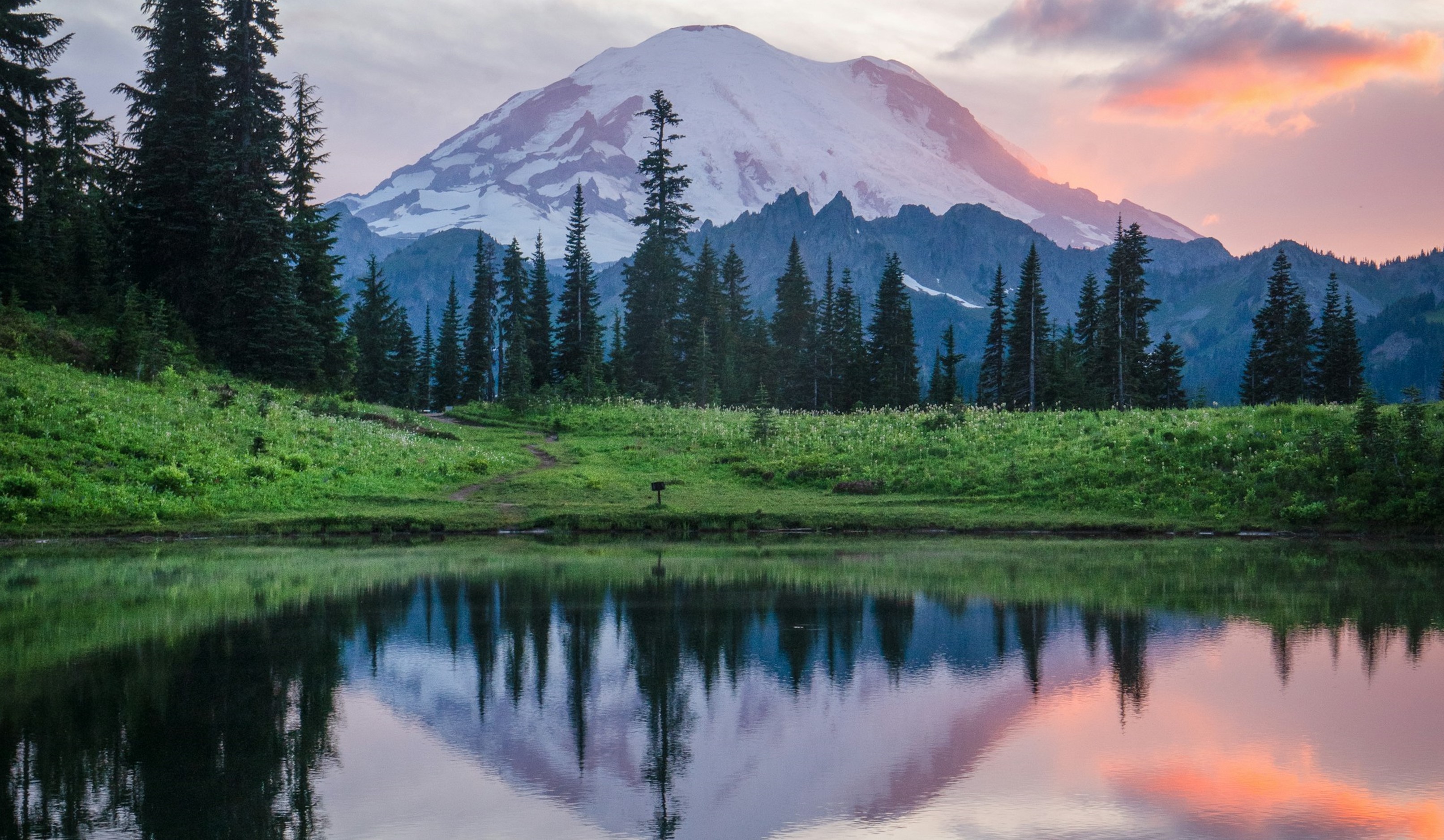Thinking of heading to Mount Rainier for stunning wildflower displays and awe-inspiring cascades? You’ll have to plan ahead because this summer, park reservations are required from May 24th through September 2nd.
To avoid the headache of a sold-out park, check out the reservation details below to make sure you’re in the clear. And if you want to avoid the reservation system altogether, we have a few tips for that at the end.
Understanding Mount Rainier’s new timed entry system

Over 2.5 million people visited Mount Rainier’s snow-capped peak in 2023, and the NPS anticipates even more visitors this year. The park hopes that the pilot reservation system will reduce wait times, driving delays, and congested trails during its busiest months.
Mount Rainier’s pilot timed entry system began May 24th at the Stevens Canyon and Nisqually entrances, two popular access points for the park. The Sunrise Corridor entrance will also require reservations from July 4th to September 2nd.
You’ll need to make a reservation on recreation.gov, where you’re prompted to select a date and a two-hour entry window ranging from 7:00 am to 3:00 pm. An account is required, and a $2 reservation fee is applied upon booking.
Those having issues with the online system can call 877-444-6777 to make a direct reservation.
Only one vehicle or motorcycle is allowed per reservation per day. Unless you have a travel membership like the America the Beautiful Pass, you’ll also need to pay a park entrance fee at the gate, which will cost $30 and is good for 7 days.
Advanced reservation slots are released 90 days ahead, but another batch is released the night before at 7:00 pm if you weren’t able to get a ticket the first time around.
When you arrive, you can bring a digital or printed copy of your receipt to be scanned alongside your photo ID. Consider taking a screenshot of your ticket before hitting the road to avoid signal issues at the entrance.
Tips for visiting without reservations

It may be stressful to add more to your to-do list when all you want to be doing is hiking Mount Rainier and letting your worries slip away. But there’s always a silver lining, and if you’re flexible, you may be able to pass through without a reservation.
Arriving earlier or later is going to be the simplest way to get in without a reservation. You’re exempt from the new requirements if you arrive before 7:00 am or after 3:00 pm. Just make sure not to arrive at 6:55 in the morning – you can expect a line and may not make it in time, especially on peak dates.
If you’re staying in the park at an on-site lodge, campground, or with your first-come-first-serve backpacking permit in hand, no reservation is needed. And as I’ve explored with this Yosemite reservation hack, staying at a nearby hotel or lodge that offers tours is a great way to circumvent pesky entry requirements.
For choosing a great tour, reputable outfitters include Tours Northwest and Evergreen Escapes, both departing from Seattle and offering a full day of adventure while taking all the park planning off your hands.
If you’re not dead set on seeing Cougar Rock, Box Canyon, Snow Lake, and other top spots, you may be better off planning your trip around less crowded areas of the park. The Carbon River Entrance and White River Entrance both offer great experiences without the hassle, as they won’t require reservations in 2024.
For the truly adventurous visitor, you can skirt a reservation if you enter on foot or by bike. But you’ll still need a permit or reservation if you plan on spending the night.
As outdoor tourism continues to grow, we may see a rise in reservation systems for other national parks in Washington. Luckily, the fees are low for now, and the reservation site is pretty easy to navigate.
We can also do our part to keep parks less congested. By embracing responsible travel, planning ahead, and canceling when necessary, we give other visitors a fair chance of entry.
And the better park-goers respect the evolving park rules, the smoother these new reservation systems will go.




